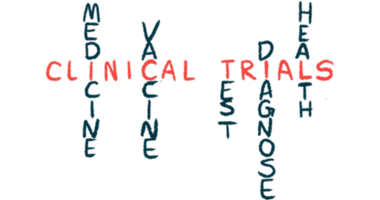A young man’s journey with hemophilia and gene therapy, part 1
Diagnosed as an infant, Domenic grew up with headgear and infusions

First in a series.
Treatment for people living with hemophilia has long meant a lifetime of infusions, careful planning, and constant vigilance. But new therapies are rewriting what’s possible, particularly gene therapy.
Domenic Catrine is a charismatic 21-year-old who lives with severe hemophilia B. A junior in college pursuing a degree in film, he dreams of one day bringing hemophilia to the big screen and sharing his community’s story with the world. He says hemophilia has shaped nearly every stage of his life. Long before gene therapy became an option, daily routines, school activities, and even childhood playtime were filtered through the lens of managing a severe bleeding disorder.
Protective headgear and the burden of infusions
Domenic was diagnosed with hemophilia B as a newborn. His mom, who worked in the medical field, quickly became both caregiver and advocate. From his earliest days of crawling and walking, she insisted he wear a helmet to protect his still-developing skull.
“Anytime I was moving around the house, whether crawling or learning to walk, I had to wear a helmet,” Domenic recalled. The rule even applied to school. By first and second grade, recess and gym class meant protective headgear, a visible reminder that his life was different from his peers.
By third grade, his mom began trusting him to make safer choices on his own, like avoiding tackle football at recess. But even as he gained more independence, hemophilia remained a constant presence.
Treatment began early. At first, home care nurses visited twice a week to give his factor infusions. When the family moved and those services weren’t available, his mom taught herself to administer the medication.
“She’d wake up early to do my medicine before work, so I could get to the bus stop,” Domenic remembered.
The routine defined much of his childhood. While other kids started their mornings with cartoons or breakfast, Domenic often began with a needle.
His earliest severe bleed, at age 3 or 4, happened when he jumped knee-first into a kiddie pool at his grandparents’ house and landed on something hard. The injury required hospitalization and weeks of recovery. “That was my first [severe] bleed,” Domenic said. “I’ll never forget it.”
By middle school, medical advances offered some relief. A new therapy reduced his schedule from twice a week to once-weekly infusions. Still, the treatments remained disruptive.
Learning to do the infusions himself became another turning point. At a summer camp for kids with bleeding disorders, a counselor with hemophilia A showed him how to self-infuse. The moment gave him confidence, but it wasn’t without its setbacks. “I missed my vein once, and it shook me so badly that I had my mom go back to doing it,” Domenic admitted.
It wasn’t until eighth grade that he finally overcame his fear and committed to handling his own infusions regularly.
The risk of falling behind
When Domenic left home for Montclair State University in New Jersey, the realities of independence collided with the responsibilities of managing hemophilia. No longer under his mother’s watchful eye, he often pushed infusions to the side. “Once I got to college, my medicine became second or third priority. It should always be first,” he said.
Classes, social life, and sports quickly took precedence. He missed doses, lost track of supplies, and occasionally paid the price. He experienced two significant bleeds in college, one from a football game, another from basketball. Both required extra care and underscored the risk of falling behind on treatment.
“I was thinking that once a week is the ceiling for me, like, this is where I’m at, this is how it’s gonna be for the rest of my life,” Domenic said.
In Part 2, Domenic takes the leap into gene therapy, from the decision to do it to the emotions leading up to the infusion.
Note: Hemophilia News Today is strictly a news and information website about the disease. It does not provide medical advice, diagnosis, or treatment. This content is not intended to be a substitute for professional medical advice, diagnosis, or treatment. Always seek the advice of your physician or another qualified health provider with any questions you may have regarding a medical condition. Never disregard professional medical advice or delay in seeking it because of something you have read on this website. The opinions expressed in this column are not those of Hemophilia News Today or its parent company, Bionews, and are intended to spark discussion about issues pertaining to hemophilia.








Leave a comment
Fill in the required fields to post. Your email address will not be published.